Redmouth Grouper
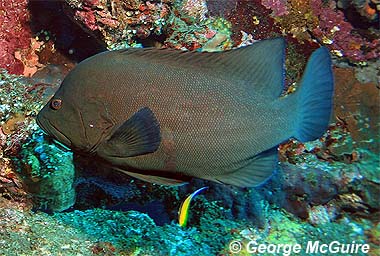
Aethaloperca rogaa
These flattened oval-shaped reef fish have angular, slightly concave profiles sloping down to their wide mouths that are red to orange inside. They have a continuous dorsal fin that is somewhat elongated, and a matching elongated anal fin, that trail back towards the short, square caudal (tail) fin. Generally dark brown to black, they have an orange cast and often a pale bar on their sides, and they rarely grow to their full possible 24 inches long. They prefer coastal habitats with caves and crevices where they can hunt stomatopods and smaller fish yet hide from larger fish and marine mammals that hunt them.
Order: Perciformes
Family: Serranidae
Genus: Aethaloperca
Species: rogaa
Common Names
English language common names are redmouth grouper, red-flushed cod, red-flushed rock-cod, red-flushed rockcod, redmouth groper, and redmouth rockcod. Other common names include caalo (Somali), cherna roga (Spanish), chewa (Swahili), cá mú san (Vietnamese), garoupa roga (Portuguese), gerape (Aceh), geurape itam (Aceh), ginimas faana (Divehi), hamoor-e-siah (Persian), hamour (Arabic), hamroor (Arabic), kalugini (Mahl), karuthachemmali (Malayalam), kerapu (bahasa Indonesia), kerapu batu (Malay), koleo (Gela), kubing (Visayan), kugtong-baraka’ (Bikol), kurohata (Aceh/Japanese), lapu-lapu (Tagalog), lapu-lapung itim (Tagalog), Lapulapu (Davawenyo), matongo (French), merou noir (French), pagukpok (Surigaonon), rooibek-kabeljou (Afrikaans), rødmundet koralbars (Danish), sheenenoh (Arabic), tewa (Swahili), vielle roga (French), and zackenbarsch (German).
Importance to Humans
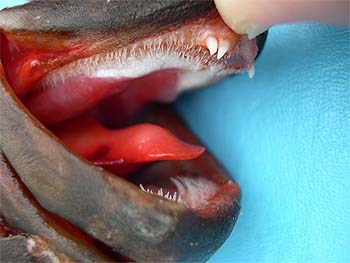
Redmouth grouper are incidentally captured by artisanal and small-scale commercial fishers, however it is of no importance to commercial fisheries as it occurs in low abundance throughout its geographical range. It is caught with hook and line, spear, and perhaps in fish traps and is occasionally seen in Hong Kong live fish markets.
Conservation
Threats to the redmouth grouper include overfishing through incidental capture along with habitat loss through the removal and loss of coral reefs.
> Check the status of the redmouth grouper at the IUCN website.
The redmouth grouper is listed as “Data Deficient” throughout its range by the World Conservation Union (IUCN). The IUCN is a global union of states, governmental agencies, and non-governmental organizations in a partnership that assesses the conservation status of species. The “Data Deficient” assessment is indicative of the need for furhter information on fisheries and population status for this species.
Geographical Distribution
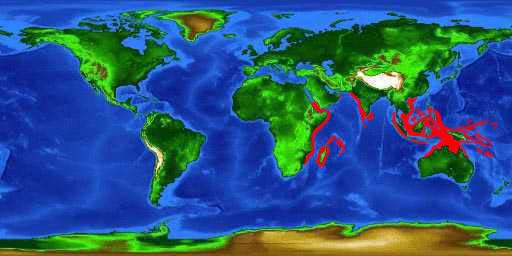
The redmouth grouper is found in the Indo-West Pacific region including the Red Sea to South Africa and east to the Gilbert Islands including Thailand, Japan, Philippines, Indonesia, Australia, Papua New Guinea, Palau, and the Solomon, Caroline, and Gilbert Islands. This species is more than likely found off all tropical islands with the Indian Ocean. It has also been recorded from Europa Island.
Habitat
This tropical species resides among coast reefs and lagoons. It has been observed over silty habitats and in or near caves and crevices in the reef. The depth range of the redmouth grouper is from 3-197 feet (1- 60 m).
Biology
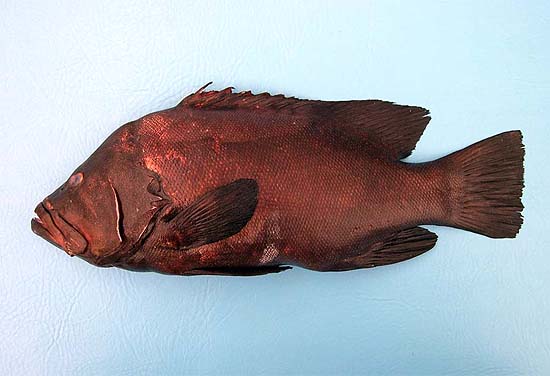
Distinctive Features
The body is deep and compressed with a steep, straight or slightly concave dorsal head profile along snout and deeply convex from the eye to the dorsal fin. The rear nostrils are round or oval in shape and not much larger than the front nostrils. The jaw extends past the eye. The dorsal fin originates over the operculum; the middle dorsal and anal fin rays are elongated in adult redmouth groupers resulting in an angular profile with the rear margin almost vertical. The caudal fin is truncate and the pectoral fins are asymmetrical. The pelvic fins are subequal to pectoral fins and extend beyond the anus.
Coloration
The redmouth grouper is dark brown to black in color, occasionally with an overall orange cast as well as a pale vertical bar along the side of the abdomen. The distal part of the spinous dorsal fin ranges from dark orange to brownish red. The inside of the mouth, gill cavity, and upper jaw membranes are reddish to orange giving rise to the common name “redmouth grouper”. Juveniles have a broad white posterior margin on the caudal fin and a narrow white margin along the soft dorsal fin.
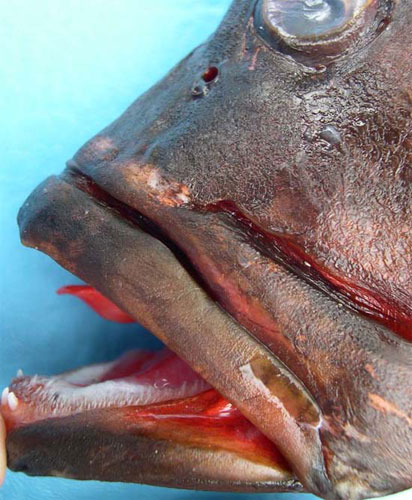
Dentition
There are small canines located at the front of the jaws in addition to 2-4 rows of small slender teeth at the side of the lower jaw. There are teeth present on the palatine.
Size, Age, and Growth
The maximum reported length of the redmouth grouper is 24 inches (60 cm) total length. Sexual maturity is reached at lengths of approximately 14 inches (35 cm) standard length.
Food Habits
Redmouth groupers feed on small fishes including Pempheris sp. (a common cave dweller) as well as stomatopods (Pseudosquilla sp.). Small juveniles mimic small non-predatory reef fishes includingCentropyge vrolikii and C. nox along with Pomacentrus spp. and Stegastes spp. until they outgrow their “model” in size. Through this mimicry, juvenile redmouth groupers use this “disguise” for advantage when foraging for small fishes. This form of mimicry is often referred to as “aggressive mimicry”.
Little is known regarding the reproductive habits of this naturally scarce species. Preliminary data indicates that the redmouth grouper spawns throughout the year and is not known to form spawning aggregations.
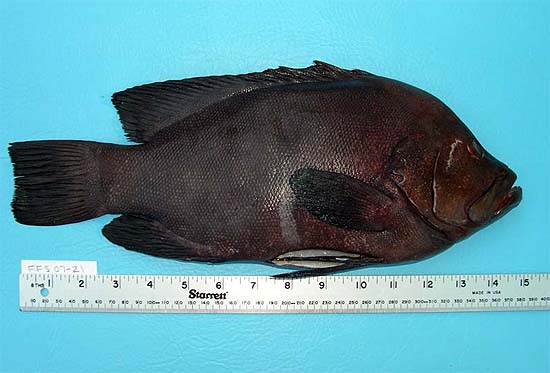
Predators
Larger fishes and marine mammals are potential predators of the redmouth grouper.
Taxonomy
The redmouth grouper was originally described as Perca rogaa by Forsskål in 1775. This name was later changed to the currently valid Aethaloperca rogaa (Forsskål 1775). Synonyms referring to this species in past scientific literature include Perca lunaria Forsskål 1775 and Cephalopholis rogaa Forsskål 1775. The family Serranidae includes approximately 450 species and includes the seabasses and groupers.
Prepared by: Cathy Bester